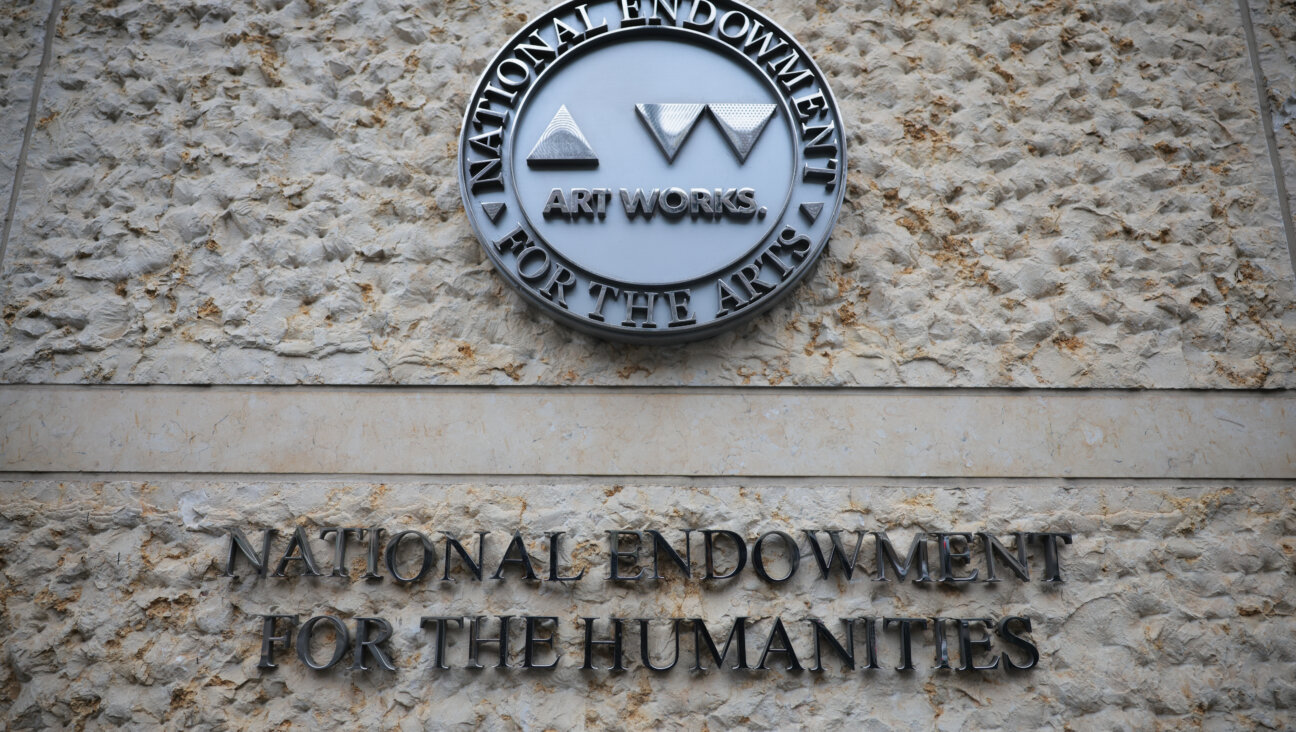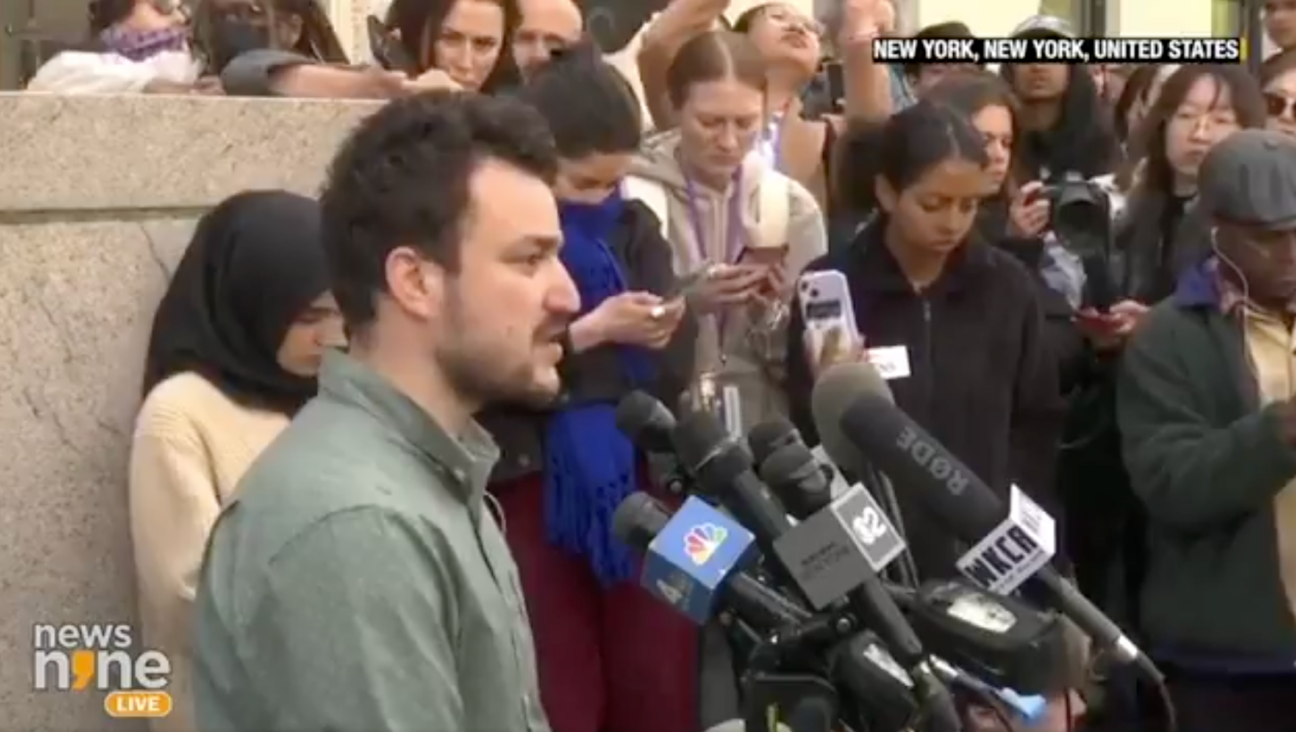Spiritual Sounds
Last year, on a recent evening in December, the Villa-Lobos Brothers, three virtuoso violinists from Veracruz, Mexico, made their main-stage debut at New York City’s Carnegie Hall. Their path to that venerated concert hall, however, was rather unusual.
The brothers are members of the Shul Band, a folk rock octet that performs Hebrew liturgical songs during services at the Shul of New York, a synagogue on the city’s Lower East Side. The music is part klezmer, part mariachi and “a little bit Partridge Family,” said Adam Feder, the guitar-playing musical director of the Shul.
“We’re a shul that loves music, and a shul that loves to pray through music,” said Feder. That mixture of music and spirituality has been attracting a growing multigenerational following to the congregation’s services at the Angel Orensanz Foundation, which is housed in the oldest standing synagogue in New York.
“The music invites you in,” said Stefanie Ziev, a vice president of development for the Oxygen Network. Ziev attended the packed-to-the-rafters Yom Kippur services in October. It was her first visit to the Shul, but she’s been back every other Friday since then. “The first time I heard the shechechianu, I cried.” “It’s not entertainment that I’m after,” explained Feder, who was previously the choral leader at the Village Temple and sang in the choir of B’nai Jeshurun — both located in Manhattan. “We are taking ancient liturgy and grappling with it and relating to it through music.”
Feder created the Shul Band in 2000 to complement the teachings of Rabbi Burt Siegel, founder and spiritual leader of the Shul of New York. Feder began approaching musicians in the subway who sparked his artistic interest. A clarinetist and a mandolin player are now among the band’s rotating members, and, of course, the Villa-Lobos Brothers.
Ernesto Villa-Lobos, the oldest brother at 25, came to the United States in 2000 after wining a Fulbright fellowship to study at Manhattan School of Music. He knew very little English — and had never met a Jew.
That quickly changed, and in 2001 he was offered a scholarship from the school to study in Israel with renowned violinist Shlomo Mintz at the Keshet Eilon Music Center, which is located at Kibbutz Eilon in the Western Galilee.
“I was a little scared because of the situation in Israel,” Villa-Lobos admitted. “I didn’t even tell my parents until I was there.”
Two years later he met Feder at a concert at the now defunct New York club CBGB. After impressing Feder with his talent, Villa-Lobos was quickly asked to join the Shul Band. But it wasn’t just a work gig for the Mexican expatriate — the congregation became a second home for him. “The most amazing thing that you hear when you walk in the shul is that everyone is welcome here,” Villa-Lobos said.
The Shul sponsored him on an artist visa, and to thank the congregation he volunteered to do a benefit concert with his brothers, Alberto and Luis, who had joined him in New York after receiving degrees from conservatories in Europe. The Weill Recital Hall at Carnegie Hall was rented for the occasion.
On their way to the dress rehearsal the brothers — who perform a wide range of musical styles, including classical, Latin and traditional Mexican, and original compositions — stopped to buy strings at a Sam Ash music store, where Eduardo Magallanes, a Latin Grammy-Award-winning record producer, overheard their conversation.
“He heard these Mexican kids talking about Carnegie Hall,” Ernesto said with a laugh. Magallanes ended up coming to their concert, and he liked what he saw.
So he gave a video of the concert to Gabriel Abaroa, president of the organization that produces “The Latin Grammy Awards,” and on November 1, 2006, the brothers were the “house band” at the Latin Grammy Special Awards Presentation in the Rainbow Room at Rockefeller Center.
Two weeks later they performed their second annual benefit concert for the Shul at Merkin Concert Hall in Manhattan, and alongside them was their grandmother, Cristina Vásquez, who flew in from Mexico. Wrapped in a red-tasseled rebozo, a traditional shawl, she harmonized with her grandsons on Mexican folk songs.
“They didn’t like this kind of music when they were young,” Vásquez said. “Now that they’re far from their land, they miss it.” Whatever their motivation, they played with exuberant intensity for the appreciative audience.
“Does anybody know what ‘Pijul’ means?” Ernesto asked at one point, referring to the untranslatable title of the next song. “Maybe it’s a Yiddish word,” he teased. Then he returned his attention to his violin, his long, dark hair flying through the air as his bow raced across the strings.
Feder joined the brothers onstage for the encore — an Irish jig followed by a rousing klezmer tune. With their heads bowed as if in prayer, their fingers jumping and feet tapping, they weren’t just playing music, they were living it.
Devan Sipher has written for the New York Times, Show Business Weekly and PBS.
The Forward is free to read, but it isn’t free to produce

I hope you appreciated this article. Before you go, I’d like to ask you to please support the Forward.
Now more than ever, American Jews need independent news they can trust, with reporting driven by truth, not ideology. We serve you, not any ideological agenda.
At a time when other newsrooms are closing or cutting back, the Forward has removed its paywall and invested additional resources to report on the ground from Israel and around the U.S. on the impact of the war, rising antisemitism and polarized discourse.
This is a great time to support independent Jewish journalism you rely on. Make a Passover gift today!
— Rachel Fishman Feddersen, Publisher and CEO
Most Popular
- 1

Opinion My Jewish moms group ousted me because I work for J Street. Is this what communal life has come to?
- 2

Opinion Stephen Miller’s cavalier cruelty misses the whole point of Passover
- 3

Opinion I co-wrote Biden’s antisemitism strategy. Trump is making the threat worse
- 4

Opinion Passover teaches us why Jews should stand with Mahmoud Khalil
In Case You Missed It
-

Culture Jews thought Trump wanted to fight antisemitism. Why did he cut all of their grants?
-

Opinion Trump’s followers see a savior, but Jewish historians know a false messiah when they see one
-

Fast Forward Trump administration can deport Mahmoud Khalil for undermining U.S. foreign policy on antisemitism, judge rules
-

Opinion This Passover, let’s retire the word ‘Zionist’ once and for all
-
Shop the Forward Store
100% of profits support our journalism
Republish This Story
Please read before republishing
We’re happy to make this story available to republish for free, unless it originated with JTA, Haaretz or another publication (as indicated on the article) and as long as you follow our guidelines.
You must comply with the following:
- Credit the Forward
- Retain our pixel
- Preserve our canonical link in Google search
- Add a noindex tag in Google search
See our full guidelines for more information, and this guide for detail about canonical URLs.
To republish, copy the HTML by clicking on the yellow button to the right; it includes our tracking pixel, all paragraph styles and hyperlinks, the author byline and credit to the Forward. It does not include images; to avoid copyright violations, you must add them manually, following our guidelines. Please email us at [email protected], subject line “republish,” with any questions or to let us know what stories you’re picking up.
















